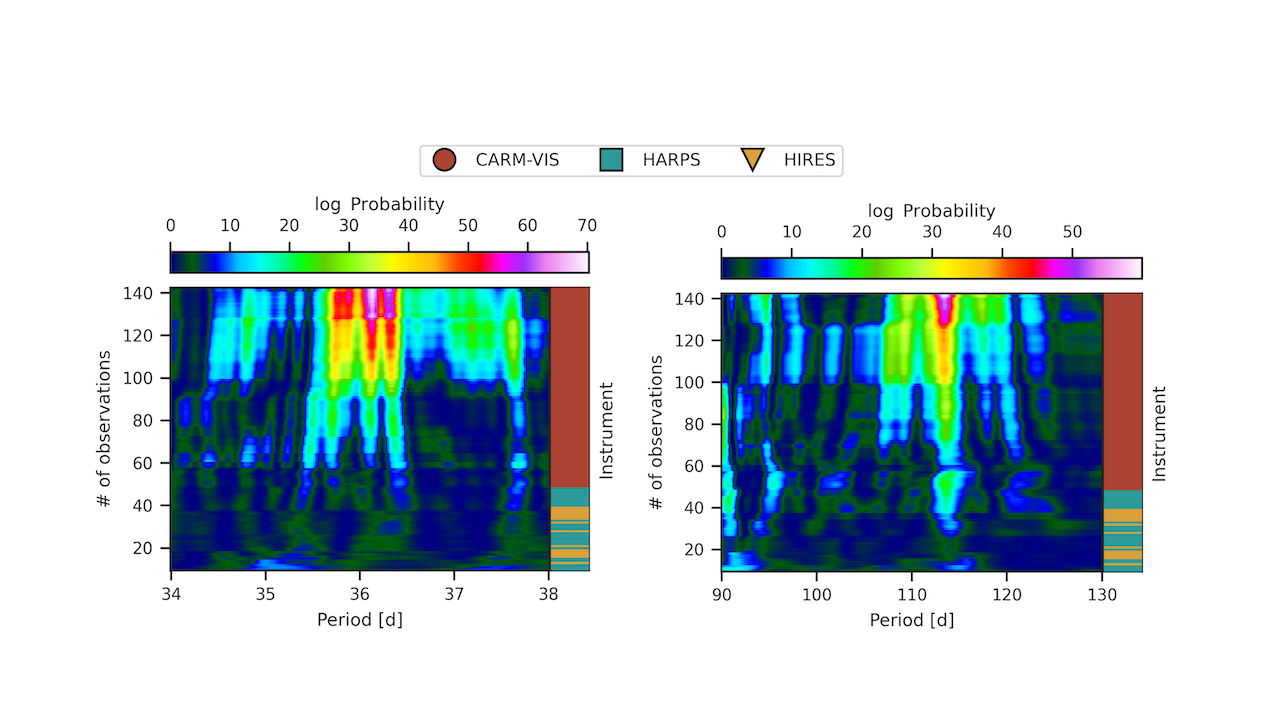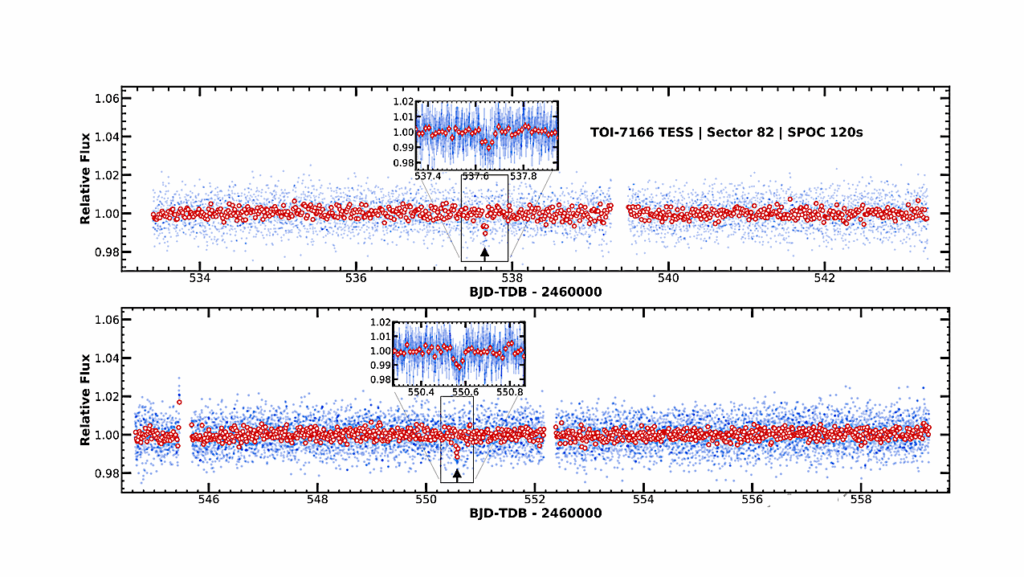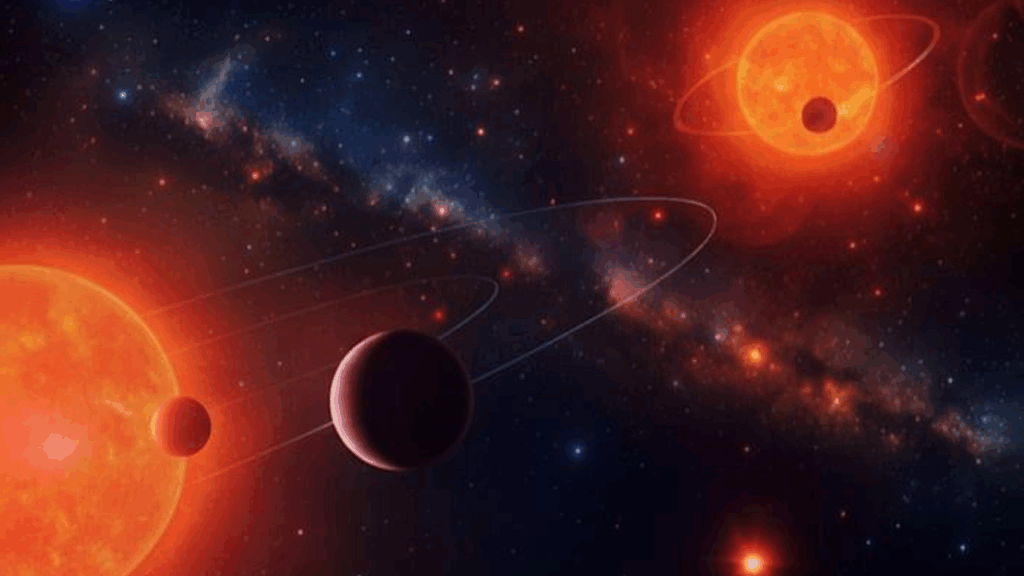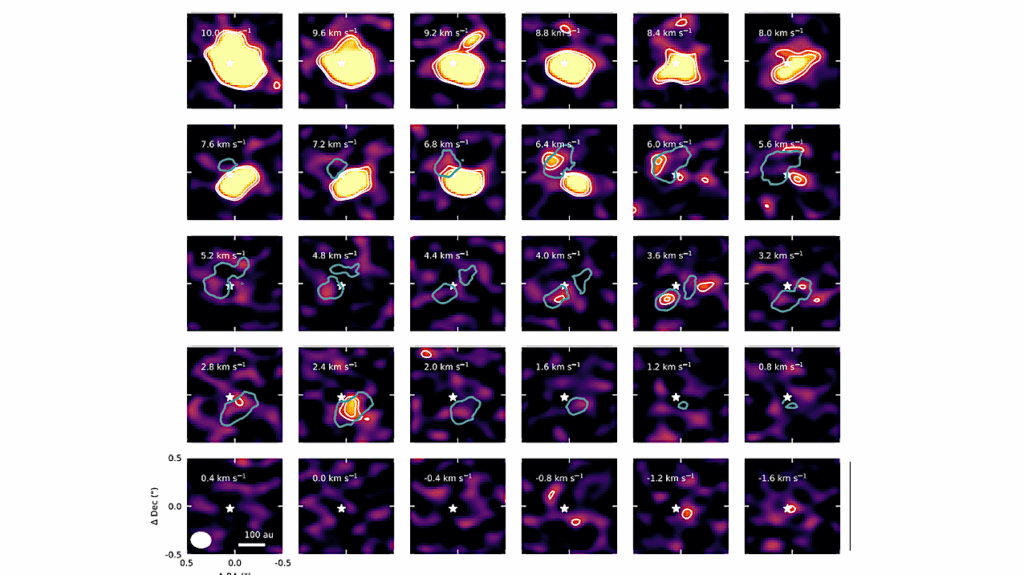The CARMENES Search For Exoplanets Around M Dwarfs. A Sub-Neptunian Mass Planet In The Habitable Zone Of HN Lib

We report the discovery of HN Lib b, a sub-Neptunian mass planet orbiting the nearby (d≈ = 6.25 pc) M4.0 V star HN Lib detected by our CARMENES radial-velocity (RV) survey.
We determined a planetary minimum mass of Mbsini= 5.46 ± 0.75 M⊕ and an orbital period of Pb= 36.116 ± 0.029 d, using ∼5 yr of CARMENES data, as well as archival RVs from HARPS and HIRES spanning more than 13 years. The flux received by the planet equals half the instellation on Earth, which places it in the middle of the conservative habitable zone (HZ) of its host star. The RV data show evidence for another planet candidate with M[c]sini= 9.7 ± 1.9 M⊕ and P[c]= 113.46 ± 0.20 d.
The long-term stability of the signal and the fact that the best model for our data is a two-planet model with an independent activity component stand as strong arguments for establishing a planetary origin. However, we cannot rule out stellar activity due to its proximity to the rotation period of HN Lib, which we measured using CARMENES activity indicators and photometric data from a ground-based multi-site campaign as well as archival data.
The discovery adds HN Lib b to the shortlist of super-Earth planets in the habitable zone of M dwarfs, but HN Lib [c] probably cannot be inhabited because, if confirmed, it would most likely be an icy giant.

Comparison to other small (i.e., M sin i ≤ 10M⊕) potentially habitable planets orbiting M-dwarf stars at less than 10 pc from the Sun. HN Lib b is highlighted in red, while the other planets are iterated between orange and blue for better distinguishability. The light green and dark green shaded areas denote the optimistic and conservative HZs of Kopparapu et al. (2013, 2014), respectively. The planet list was taken from the habitable planets catalog of the Planetary Habitability Laboratory at the University of Puerto Rico and merged with the composite planetary parameters table of the NASA Exoplanet Archive. — astro-ph.EP
E. González-Álvarez, J. Kemmer, P. Chaturvedi, J. A. Caballero, A. Quirrenbach, P. J. Amado, V. J. S. Béjar, C. Cifuentes, E. Herrero, D. Kossakowski, A. Reiners, I. Ribas, E. Rodríguez, C. Rodríguez-López, J. Sanz-Forcada, Y. Shan, S. Stock, H. M. Tabernero, L. Tal-Or, M. R. Zapatero Osorio, A. P. Hatzes, Th. Henning, M. J. López-González, D. Montes, J. C. Morales, E. Pallé, S. Pedraz, M. Perger, S. Reffert, S. Sabotta, A. Schweitzer, M. Zechmeister
Subjects: Earth and Planetary Astrophysics (astro-ph.EP)
Cite as: arXiv:2305.19677 [astro-ph.EP] (or arXiv:2305.19677v1 [astro-ph.EP] for this version)
Submission history
From: Esther González-Álvarez
[v1] Wed, 31 May 2023 09:16:48 UTC (3,001 KB)
https://arxiv.org/abs/2305.19677
Astrobiology








